Arctic char hatchery supplies data on dissolved gas concentrations
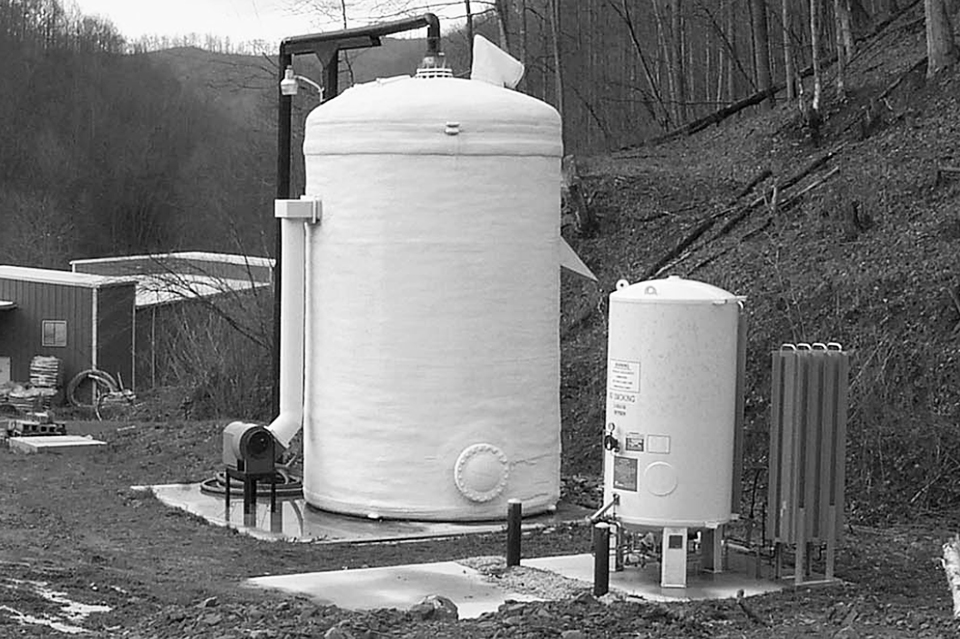
Water pumped or flowing by gravity out of coal mines is now used for fish culture in West Virginia, Maryland, and Pennsylvania, USA. However, these mine water flows can contain levels of dissolved carbon dioxide and/or nitrogen gas that are too high for fish culture.
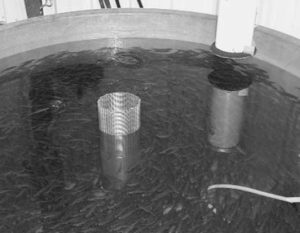
Gas bubble trauma in fish can result from high total dissolved gas super-saturations. Nitrogen saturation levels as low as 102 to 103 percent can affect juvenile fish. Nitrogen gas super-saturation problems can occur when water is heated and not allowed to come to equilibrium with dissolved gases or when air comes into contact with water at greater than atmospheric pressure, which can be the case in certain underground mines or if air is suctioned with water into a pressurized pipeline.
Ventilated cascade columns strip and decrease dissolved nitrogen gas to levels closer to atmospheric saturation. Pure oxygen transfer columns and vacuum degassing columns can be used to drive dissolved nitrogen gas concentrations down to sub-saturation levels.
Carbon dioxide
Safe levels of dissolved carbon dioxide depend upon the fish species, developmental stage of the fish, and other water quality variables including alkalinity, pH, and dissolved oxygen levels. Dissolved carbon dioxide begins to affect salmonids at concentrations greater than 20 milligrams per liter.
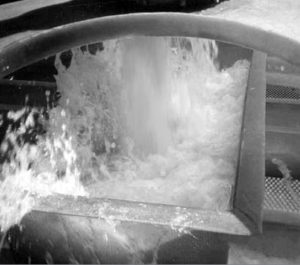
through a counter-current forced-air
cascade stripping column installed in the top portion of a water reservoir tank at the MCRA Hatchery.
High levels of dissolved carbon dioxide can occur if mine geology includes limestone deposits, especially if mineral acidity is present to decrease the water’s pH. Dissolved carbon dioxide can be stripped into the surrounding atmosphere if there is enough air water contact.
Ventilated cascade columns are often used to strip dissolved carbon dioxide because they can be easily designed to contact the 5 to 10 volumes of air required per unit volume of water flow.
Case study
In a case study, the Mingo County Redevelopment Authority Hatchery near Delbarton, West Virginia, is supplied with up to 3 square meters per minute of water pumped from an abandoned portion of an active coal mine. The hatchery is raising arctic char for West Virginia Aqua LLC. Tina Rimmer, general manager at West Virginia Aqua LLC, supplied data on dissolved gas concentrations at the facility.
The mine water contains 40 to 80 milligrams per liter of dissolved carbon dioxide, a result of the water’s high alkalinity – approximately 400 milligrams per liter as calcium carbonate. In addition, a severe dissolved nitrogen super-saturation problem could occur if the mine dewatering pump suctioned air into its pump intake, which is a real possibility during droughts. The mine water contains almost no iron, aluminum, or manganese and is nearly ideal for salmonid culture if not for its elevated levels of dissolved gases.
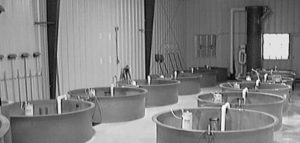
To prevent dangerous levels of dissolved gases from entering the hatchery, a counter-current cascade-stripping column was built in the top portion of a water reservoir tank installed directly above the grade of the hatchery building. This stripping column at the top of the reservoir tank has successfully maintained the dissolved carbon dioxide at levels below 20 milligrams per liter while also stripping some excess dissolved nitrogen saturation from the water supplied to the hatchery. From the inlet of 150 to 160 percent nitrogen saturation flows an outlet of less than 110 percent saturation.
A non-pressurized oxygen column and low-head oxygenator were installed within the hatchery building to treat the water before it enters the fry and fingerling tanks, respectively. These columns were designed to drive dissolved nitrogen to below saturation levels, while adding dissolved oxygen to levels of 120 to 200 percent saturation.
Editor’s Note:The authors previously presented this material in February at Aquaculture America 2003 in Louisville, Kentucky, USA.
(Editor’s Note: This article was originally published in the June 2003 print edition of the Global Aquaculture Advocate.)
Now that you've reached the end of the article ...
… please consider supporting GSA’s mission to advance responsible seafood practices through education, advocacy and third-party assurances. The Advocate aims to document the evolution of responsible seafood practices and share the expansive knowledge of our vast network of contributors.
By becoming a Global Seafood Alliance member, you’re ensuring that all of the pre-competitive work we do through member benefits, resources and events can continue. Individual membership costs just $50 a year.
Not a GSA member? Join us.
Authors
-
Steven Summerfelt, Ph.D.
Conservation Fund Freshwater Institute
1098 Turner Road
Shepherdstown, West Virginia 25443 USA -
Brian Vinci
Conservation Fund Freshwater Institute
1098 Turner Road
Shepherdstown, West Virginia 25443 USA
Tagged With
Related Posts
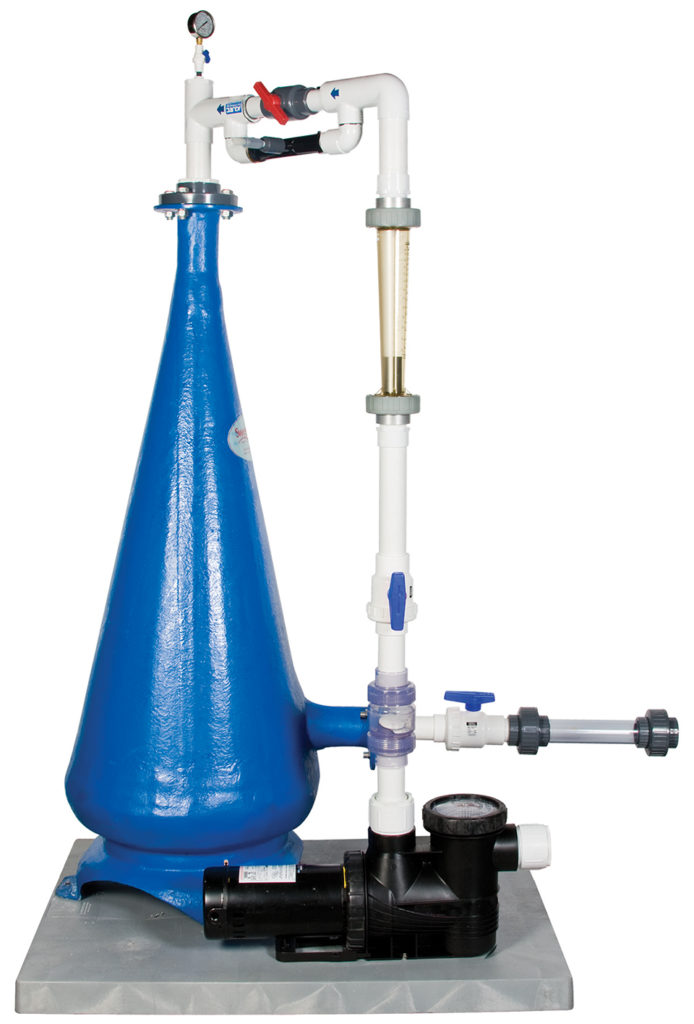
Responsibility
A look at unit processes in RAS systems
The ability to maintain adequate oxygen levels can be a limiting factor in carrying capacities for RAS. The amount of oxygen required is largely dictated by the feed rate and length of time waste solids remain within the systems.

Responsibility
A look at various intensive shrimp farming systems in Asia
The impact of diseases led some Asian shrimp farming countries to develop biofloc and recirculation aquaculture system (RAS) production technologies. Treating incoming water for culture operations and wastewater treatment are biosecurity measures for disease prevention and control.
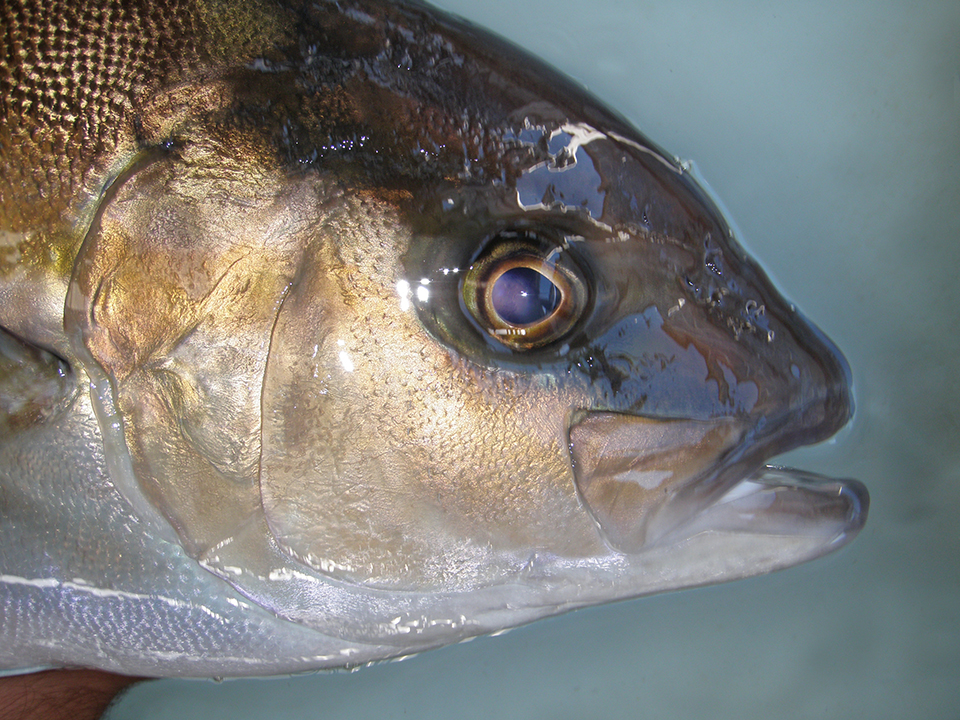
Health & Welfare
Advances in yellowtail larval rearing
The University of the Canary Islands in Spain is researching yellowtail broodstock management and larval rearing to promote aquaculture diversification in Europe.
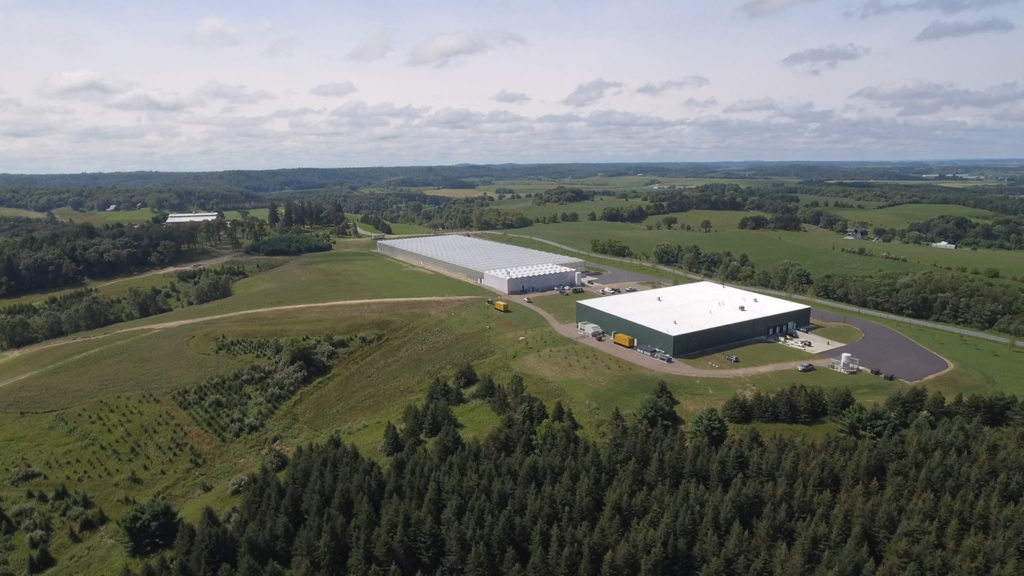
Intelligence
RAS believers making an early stand on American soil
RAS is an emerging sector with two producers leading the U.S. pack, responding to high demand for Atlantic salmon and for local, low-impact food.


